 |
An Architect Looks Back
By Ashihara Yoshinobu Page 4 Page 4
At Musashino Art University
When I was at Breuer's office in New York, I met Ohe Hiroshi (architect and professor at Hosei University) and Takase Hayahiko (now a practicing architect in Los Angeles) for the first time when they came through on their way to South America. After I got back to Japan, Ohe invited me to teach at Hosei University, and I became a lecturer there. In 1959 I was promoted to professor. About seven years after I started there, Musashino Art University decided to set up an architecture department and asked me to become chairman. They said the hiring of the staff would be left completely up to me, so, in an effort to avoid the kind of factionalism that is often rife in universities, I chose people of various backgrounds, including Takeyama Minoru from Waseda and Terada Hideo from Nihon University. I called them together and said, "O.K., let's create an outstanding department without factional strife." It's a fine group. Musashino also asked me to design their campus. So I left Hosei and went to Musashino.
At that time, too, in response to invitations, I did stints at the University of New South Wales in Australia and the University of Hawaii as visiting professor. These two trips were studies in cultural and geographical contrast. In New South Wales, the status of a visiting professor was high, ranking just after the deans and resident professors, and at dinner we sat in great formality at a high table in front of the students. We wore suits and neckties at all times, and the students called us "professor." The students I taught were in the fifth year, and included many who are now among the leading Australian architects. In Hawaii, the relationship between students and professors was extremely informal and casual, and we went about the campus in our shirtsleeves. The tropical climate made everything seem very relaxed and easy-going, and the university campus was filled with flocks of young ladies in moo-moos chattering on the walks.
Later, Professor Yoshitake Yasumi (professor of architecture) said they were planning to set up a new design program at the University of Tokyo and asked me if I would come and teach, so after being at Musashino for six years I moved again. I was there for about nine years, but after I turned 60 and had to retire, so I went back to Musashino. They talk about the "seven-year itch," and indeed, I seem to have shifted schools about every seven or eight years, which is unusual among members of Japan's academic community.
The University of Tokyo, Department of Architecture
Things were pretty conservative at the University of Tokyo department of architecture until I got there, but I would tell my students things like, "You have a talent for design, so give it a try" or "You'll always come out all right if you do what you believe in." But what really surprised me was that the students of architecture there had so little desire to go abroad. Most of those who went abroad were from Waseda University. They seemed to have imbibed the courageous spirit of Waseda's founder, Okuma Shigenobu (1838-1922), but Tokyo University students tended to place all their bets on the formidable institutional prestige of the university to carry them along; they knew their futures were made as long as they did not try to do anything at which they might fail. So they never ventured abroad for study, but snapped up the jobs offered them in the big corporations right after graduation-the safe and sure path to success. Only a few actually went into design.< I guess it was a reflection of the times. When I got there planning and design began to enjoy immense popularity. The department attracted many of the most outstanding students. I began to advise them to go abroad and study, or at least not to go right into graduate school, but to take a job for three or four years and come back for further study when they really felt the need for it. At first, they did not know whether to believe me or not, but now, they all want to go abroad. And whenever there is a competition, they are all right in there participating.
As I said in my retirement lecture, this decade is Tokyo University's Golden Age. True leaders are certain to emerge from among those who were there during a past ten years. And every student must believe that he will become such a leader-all the rest will lag behind. And now that is the spirit that pervades the department, so things are really going well.
The two big projects our architectural firm was involved in during the years I was at the University of Tokyo were the Daiichi Kangyo Bank Head Office and the National Museum of Japanese History. Our office had been asked to do the Museum late in 1972 and the request for the Daiichi Kangyo Bank project came in 1973. These two projects were the two largest we had ever been asked to do and were unparalleled opportunities for us to show what we could do as architects. I had reached a point in my life where experience had accumulated to a real high point, and it was a most opportune time for such projects to come our way. They provided opportunities for which I am most grateful.
While I was serving as professor at the University, I was a public servant, and could not be formally associated with a private concern such as my design office. So throughout that period, Moriya Hideo, who had been with me ever since the time we designed the Chuo Koron building and who is a most able man, served as director of the firm. On the way to and from the university I would stop by the office and help out the staff with various projects.
The Delos Experience
Of all the things that have happened in my life, I think one of the most memorable and the most stimulating was my participation in the Delos Symposium. When I visited Greece for the first time, I had little idea who Mr. C. A. Doxiadis was, but I had heard something about him, so I stopped by his office for a visit. We talked about many things and I attempted to describe Japanese architecture to him. You may have noticed, I said, that when you watch an American stewardess come down the aisle, you are impressed, for instance, with her well proportioned figure and the smart way she is dressed. It is only as she comes nearer that you may discover she is actually quite homely. A Japanese stewardess, on the other hand, may be short-legged and rather poorly proportioned from afar, but when she comes nearer, you find her quite pretty, with smooth, finely textured skin. A similar analogy can be used to compare Greek and Japanese architecture, I said. From a distance, one may admire the entasis and elegant proportions of Greece's ancient architecture, but once you climb the Acropolis and come quite near it, you find it is simply a pile of rocks. With Japanese architecture, the view from faraway is asymmetrical, unimposing, apparently disorganized-but once you get inside it, you find it attractive in its detail, and of pleasing texture and finish.
Mr. Doxiadis was apparently impressed with what I had said, and asked me to help him get a chance to get a glimpse of one of those Japanese stewardesses. "But before that," he said, "I want you to come to the Delos Symposium." Later, rather to my surprise, a formal invitation came asking me to attend. And all on the basis of that one interview. So I went and was quite surprised to find myself surrounded by the most eminent company: Arnold Toynbee, Marshall McLuhan, Hermann Kahn, Edward Hall, Lawrence Halprin, Buckminster Fuller, Harrison Brown, Rene DuBois, Margaret Mead, and many others. Invited participants had to pay their airfare to the meeting, but all expenses once there were covered. The conference was held aboard a ship hired for the purpose by Mr. Doxiadis, and we spent one week sailing from island to island around the Aegean. One of the most pleasant parts of it was that all the participants brought their families. While the adults were absorbed in their discussions, the young folks became great friends; they would wrap themselves up in blankets and sit on the deck talking until the sun came up. Marshall McLuhan's son twanged away on his electric guitar and they had a wonderful time. My son, Taro, shared a stateroom with Hans Asplund's son and the two of them went to work to copy and hand out the information for our discussions. They became close friends and later Taro went off to Sweden by himself and stayed with the Asplunds for a while.
The mornings were devoted to meetings and in the afternoons we would take a dip in the ocean. Then there was dinner and while we were sleeping, the ship would move on to the next island. Then there would be another series of discussions. We all developed a marvelous rapport and got to know each other quite well. Through that conference, I came to know many fine scholars from all over the world; and whenever they come to Japan, they come to visit us at my home. All of us are humanists, and in this the conference was rather different from CIAM. At first I was a bit surprised to find them declaring opposition to high-rise apartment buildings and support for low-rise dwellings. But as we stopped at island after island, from Hydra to Michonos, and on to Santorini, I began to see for myself how marvelous the low-rise housing style was. The principles of architecture I witnessed there linked up with ideas on the aesthetic of the townscape I had been developing since my studies of the Italian square years before.
At the end of the week of meetings we landed on Delos, and in the evening, by the light of flaming torches, presented our Delos Declaration at an ancient stone rostrum. After that we returned to the ship for a farewell party. Mildred Miller, an opera singer from the Metropolitan and wife of Pittsburg University President Posvar, was among us, and I will never forget the brilliant strains of her singing echoing through the ship that night. I was thoroughly exhilarated and apparently danced quite a bit that night, and when I have met others who were on that ship in later years they often tease me, saying I was quite a good dancer. The whole experience was not only immensely stimulating intellectually but thoroughly enjoyable.
Writing
In l960 I received a Rockefeller Foundation grant and went to the U.S. to write my dissertation. When it was finished, since I knew it was customary to publish one's dissertation as a book and I would have to find a publisher, I decided to approach lwanami Shoten, which is considered one of the most distinguished publishers in Japan. Just at that time we were working on the design for the lwanami Shoten office building, so I went to chairman Kobayashi Isamu and said, "I'm writing my dissertation; would you consider publishing it?" But he became quite incensed, "Listen here, we're book publishers. You're an architect, so we've hired you to design a building, but a book publisher only makes books by reputable people that will sell." So that was the end of that. Then, about a year later, after my work had become somewhat better known, a messenger from lwanami came and said, "O.K. you've proved your point; now we'll publish your book for you if you'll just bring in your manuscript." But I had to tell them I had no manuscript to submit just then, because by that time, I had already asked the Shokoku-sha Publishing Company to do it and all had been agreed. That first book was Gaibu kakan no kosei (The Composition of Exterior Design) published in 1962.
It was almost two decades later, about the time I was to retire from the University of Tokyo, that I tried Iwanami once more. I had decided to organize my ideas in the form of a book, and I went to lwanami Shoten for advice. Then, I found they still intended to keep their word as promised so long ago, and they agreed to publish my book without condition. Machinami no bigaku (The Aesthetics of the Townscape) was published the following year, February 21, 1979, the same day as my farewell lecture at University of Tokyo; it made the day all the more dramatic and memorable.
This book has been favorably reviewed by many people and was awarded the Mainichi Newspaper Prize for Culture and the Marco Polo Prize, sponsored by the Italian Institute of Culture; it is very gratifying to see it so well received. Machinami was displayed at the Frankfurt Book Fair in 1979, and lwanami received several letters indicating interest in publishing a translation, from the Soviet Union, England, and from MIT Press in the U.S. I liked the idea of having MIT Press do it, so l began to have it translated. I selected certain chapters and sent a draft translation to my old friends Kevin Lynch at MIT and Nathan Glazer at Harvard for their reaction. They came back with the advice that the original was too closely oriented to the Japanese reader. For the English edition, I ought to rewrite and revise the text. So I went back to square one and started rewriting. I spent about two years rewriting and revising with the help of Lynne E. Riggs, an American translator and editor who lives in Japan. Finally we produced a draft that seemed more promising and sent it off to MIT. They liked it and The Aesthetic Townscape finally came out in the spring of l983. A paperback edition was published in the autumn of 1984. Using some of the new material I introduced first in English and adding some more ideas I had developed since, I wrote a sequel to the Japanese edition, published by lwanami Shoten as Zoku machinami no bigaku (More on the Aesthetic Townscape) in l983.
In 1981, I received a request from Tienchin University in China to teach for three months. I told them I was far too busy to teach for three whole months, but that I would be glad to come on three conditions: that I could do a three-day intensive series of lectures, that I could speak in Japanese, and that my wife could accompany me. They agreed and we went. I was awarded the title Guest Professor, and the president of Tienchin University, with whom I got along very well, said I would be welcome to come back anytime.
I found out that my book, Exterior Design in Architecture, had been translated into Chinese. When I thought about it, I realized that my ideas on Gestalt space, and figure and ground, followed the same principles as the Chinese theory of yin and yang-no doubt this was what made my ideas particularly interesting to the Chinese.
Exterior Design in Architecture was published in English in 1970, and has now been translated into Spanish as well. The U.S. edition of this book was reprinted in paperback and has been quite well received. From the American point of view, perhaps its appeal has been because the Gestalt theory seems rather Asiatic, akin to Oriental mysticism, perhaps. As for the Chinese, their appreciation for the book may stem from their pride in seeing a set of ideas with a tradition of more than 2,000 years in their own country applied to design in modern architecture.
The Search for Distinctively Japanese Qualities
In 1982 I went again to Europe to participate in the Venezia Symposium sponsored by Mrs. Alvar Aalto, a meeting focused on the theme of the future of modern architecture. On that occasion I attended a party hosted by Paolo Portoghesi at the Villa Foscari, a monumental building designed by Palladio. The villa encompasses an immense space in the shape of a cross. I was conscious of a most uncomfortable feeling as we dined beneath the cavernous ceiling of the main hall; the tremendous scale of the building puzzled me. The ceiling was covered with elaborate frescos, and the whole was extremely grand and elegant; but, I had to ask myself, how could one ever relax at a villa like this?
Just before I left for the symposium, I had had an opportunity to attend a tea ceremony in a traditional Japanese style tea ceremony room. Its tiny proportions and dim lighting were the antithesis of the awesome spaciousness of the Villa Foscari.
Later on that trip in 1982 I visited southern Germany and toured its romantic highways and medieval cities. At that time I was traveling with Professor F. G. Winter, a German architect who was interested in Japanese Buddhist architecture and the philosophy of transience and had some experience in Japan. He showed me around much of the Germany countryside. I began to notice that the verandas and window ledges of southern German houses were invariably decorated with flower boxes, making the townscape quite colorful as well as attractive. I asked Professor Winter, "Why is it that all the houses are decorated like that?" He looked at me as if mystified, "What makes you ask such a question?" Well, I told him, if it were Japan, all that would be hanging over the verandas would be quilts and bedding. "Give me a day to think it over," he said. The explanation he finally gave me was somewhat vague, but, he said, "What is certain is that we don't feel quite secure unless we have properly arranged flower boxes like that. They are a sort of proof of the existence of ourselves. Yes, we decorate our houses that way as a kind of affirmation of the self.
At first I could not understand why so much importance was attached to something that could not be seen from inside the houses, but frontality and symmetry are indeed highly prized in Europe. These are obviously the governing principles of design in Palladio's churches. Later I read Professor Winter's book, Toward the Gestalt Society, in which he explains how thought in Europe after the Renaissance came to value that which was permanent and lasting, and was less open to the principle of constant change, and this led European architecture in a very different direction from that in Japan. He commented on the Japanese city, which he admired for its flexibility and capacity for change.
Professor Winter's ideas led me to the idea of the city as amoeba-the city that will simply flow out in one direction if it is blocked from another, and that has the mysterious capacity to grow up no matter how many times it is destroyed. It may be an inherent resilience, something that grows out of a democratic society. I believe the fact that a seemingly formless megalopolis such as Tokyo can effectively function is because there is a very real implied and invisible order within it. As Benoit B. Manderlbrot shows in his The Fractal Geometry of Nature, what appears at first to be chaos invariably embraces the free-flowing order of pure randomness. Indeed, many of the ideas being presented in the "new science" may prove helpful in analyzing the apparent chaos and disorder emerges time and again in thought and spatial order in Japan. Such ideas offer new avenues for approaching the characteristics of architecture and the city from the Japanese point of view, the study of which continues to fascinate me.
On Being an Architect
I strongly feel that an architect is at his best when he is doing work that follows the dictates of his own conscience. I do not remember a great deal of what I learned at Harvard, but one motto is indelibly engraved on my mind: "Be Creative, Be Original." This is not something one hears often in Japanese universities, but at Harvard, it is a tradition; if you could not be original, you would not get anywhere. For me that motto is a kind of creed. One must, above all, think for oneself, even if he is not brilliant, and that goes not only for the things one writes but the plans he designs.
Although I have reached the usual retirement age, I find myself busier than ever. I still lecture regularly at Musashino Art University and on a guest lecturer basis at other universities. I continue to lead the very talented and enthusiastic staff of our design firm, Y. Ashihara, Architect and Associates. In addition, I serve on a variety of town planning and architecture-related committees, for several government ministries, the city of Tokyo, and other groups. Among the most challenging roles I have been privileged to hold is the post of president of the Architectural Institute of Japan.
Still, when I pause to reflect on the past, I am astonished to think of the great changes that have transformed our world. How different Japan is today, both physically and in its role in the world, than it was when I was young. How radically values have changed, not only in Japan, but in the rest of the world. And I am often forced to wonder: What have we gained? What have we lost? In this age of informality and utter freedom of expression we have gained an immense fund of creativity and intensified communication. But have we not perhaps let go of too much of the good parts of our traditions and the serenity of human relations on the communal scale that is missing in a mass society? Those of us who have experienced this age of transformation in the mid-twentieth century first-hand have a duty, perhaps, to remember and record the lessons taught by the history that coincides with our lives.
My appetite for experience and experimentation with new concepts and ideas in architecture is still insatiable, and the variety of architectural expression in the world continues to amaze me. However, I continue to search in my own way for new concepts of architecture.
|
 |
 |
 |
 |
| Aerial view of ateliers, Musashino Art Univ., Tokyo |
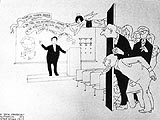 |
| Cartoon by George Molnar |
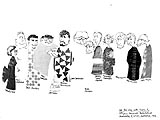 |
Cartoon by my students
at University of
New South Wales |
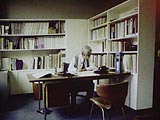 |
In my office
at University of Tokyo |
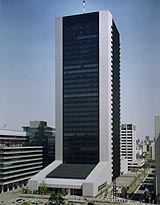 |
Daiichi Kangyo Bank
Head Office Building, Tokyo |
 |
| National Museum of Japanese History |
 |
C.A. Doxiadis
in his office |
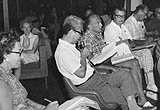 |
 |
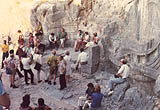 |
 |
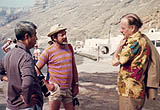 |
| At Delos Symposium |
 |
| Book cover of Exterior Design in Architecture |
 |
Book cover of
The Aesthetic Townscape |
 |
| Book cover of Zoku Machinami no bigaku |
 |
| Chinese edition of Exterior Design in Architecture |
 |
| Lecture in Chinese university |
 |
With Mrs. Alvar Aalto
in Venice |
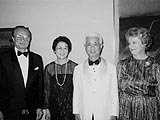 |
| At the Embassy of Finland, Tokyo, 1985 |
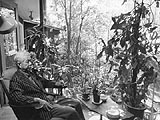 |
| At home |
|
 |